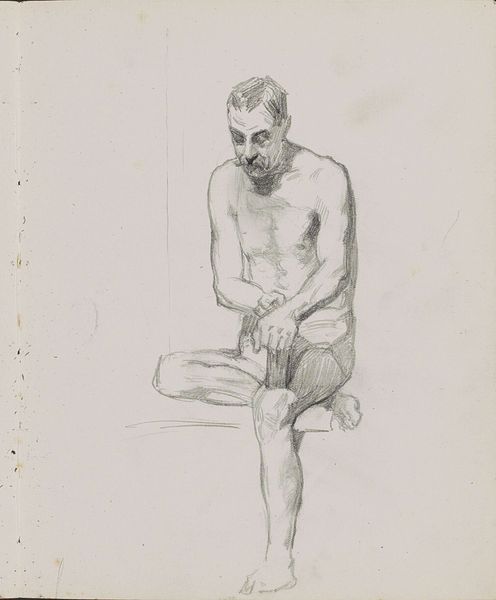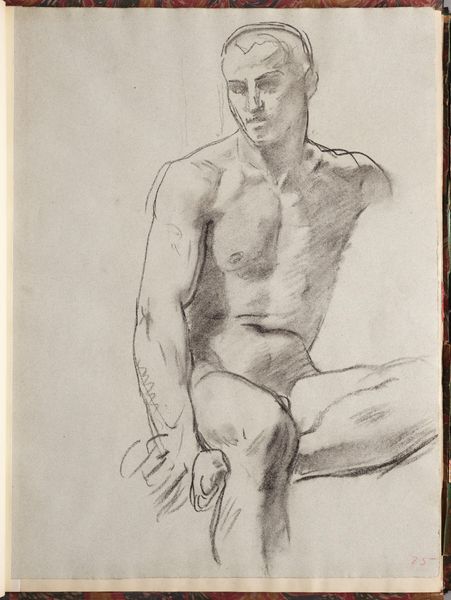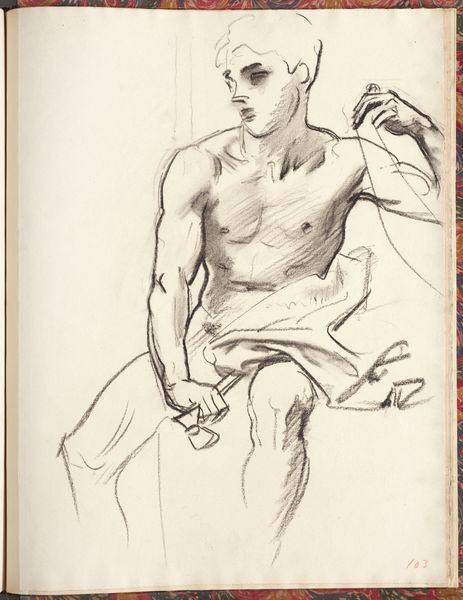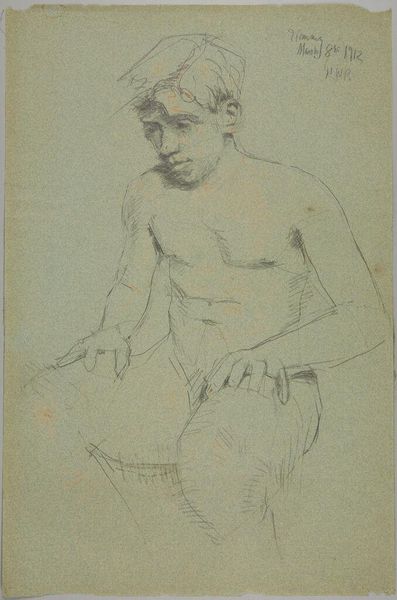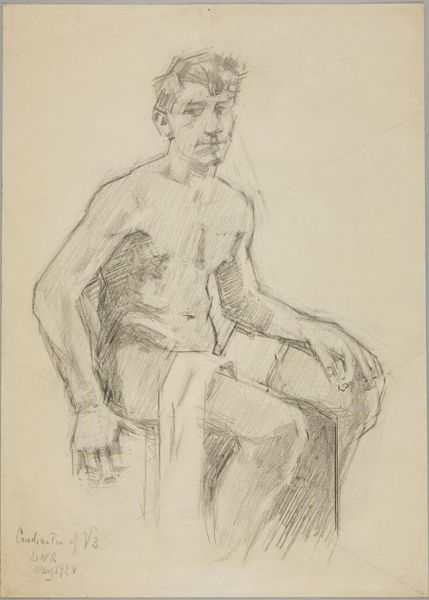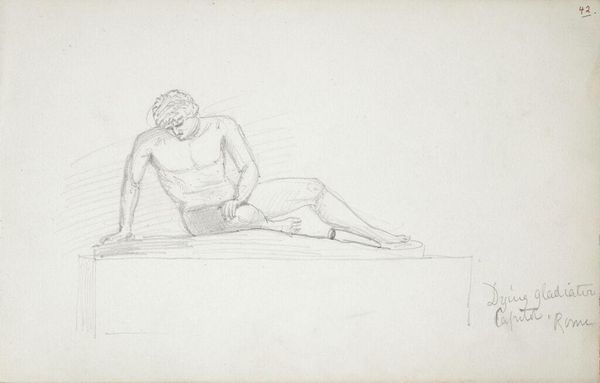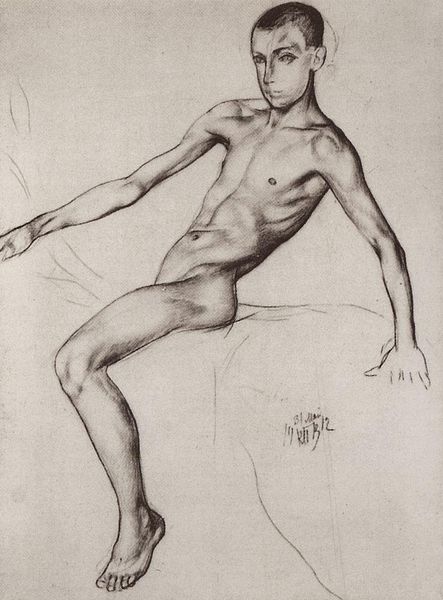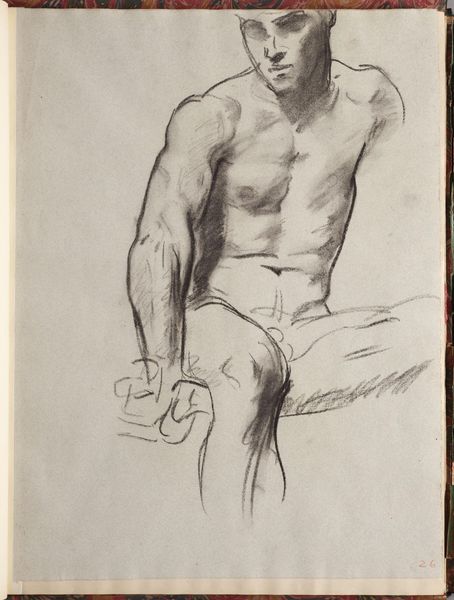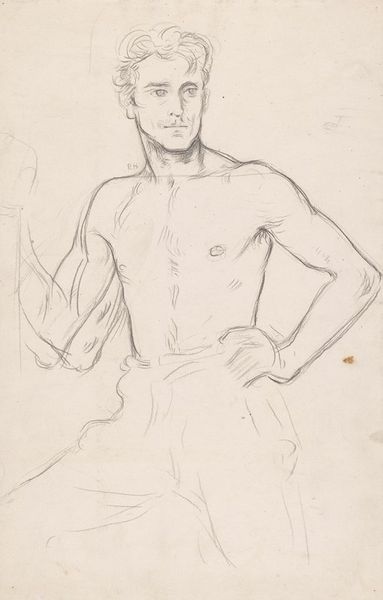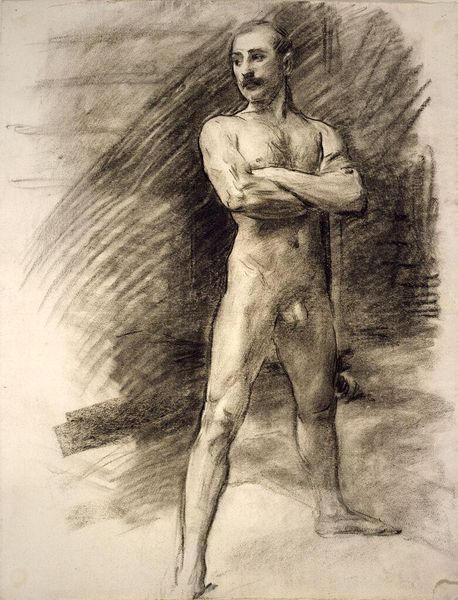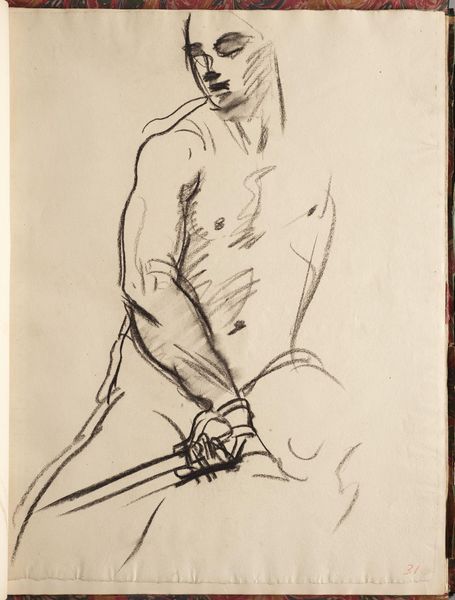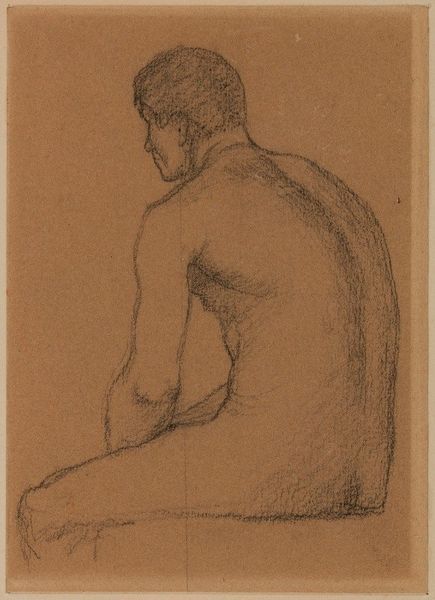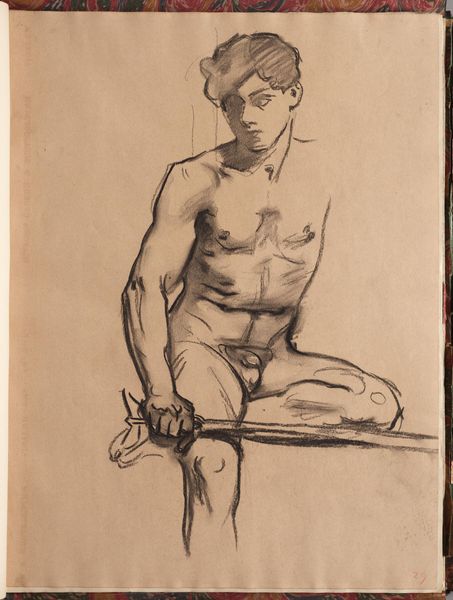
drawing, pencil
#
portrait
#
pencil drawn
#
drawing
#
amateur sketch
#
light pencil work
#
pencil sketch
#
portrait reference
#
idea generation sketch
#
pencil
#
limited contrast and shading
#
portrait drawing
#
pencil work
#
nude
#
realism
#
initial sketch
Copyright: Public domain
Editor: Here we have Eugène Jansson’s 1906 pencil drawing, "Carl Gyllins". It's striking how the artist captures a sense of quiet contemplation in the sitter. How do you interpret the symbolism, or lack thereof, in such a direct and seemingly unadorned image? Curator: While seemingly straightforward, even this simple portrait holds cultural echoes. Nude studies, especially of the male form, often alluded to classical ideals of beauty and strength. Does this portrayal of Gyllins remind you of specific historical figures or heroes? Is there a certain aesthetic quality here that you find repeated in other historical examples? Editor: Not immediately, although the pose… maybe something Greek? Curator: Perhaps, or it might speak more directly to turn-of-the-century artistic explorations. The "New Man," the exploration of masculinity prevalent at the time is present here. Look closely at his gaze: confident yet also… vulnerable? Consider the societal shifts happening then; this might represent an evolving idea of masculinity. How does the relative bareness contribute, versus costuming him formally? Editor: It does feel vulnerable. Less a triumphant hero, more…real. Leaving him nude certainly feels like removing artifice. I never considered that element, thanks. Curator: And what does removing the artifice communicate in 1906 Sweden? How is that received by audiences or Gyllins himself? How do the choices we see here impact a legacy? Art often contains encoded conversations about identity. Every line tells a tale, doesn't it? Editor: Absolutely, and you’ve illuminated a great depth to this drawing, considering the man, the artist, and his era. Curator: It's in recognizing the interconnectedness of symbol, subject, and societal context that these sketches truly resonate.
Comments
No comments
Be the first to comment and join the conversation on the ultimate creative platform.
